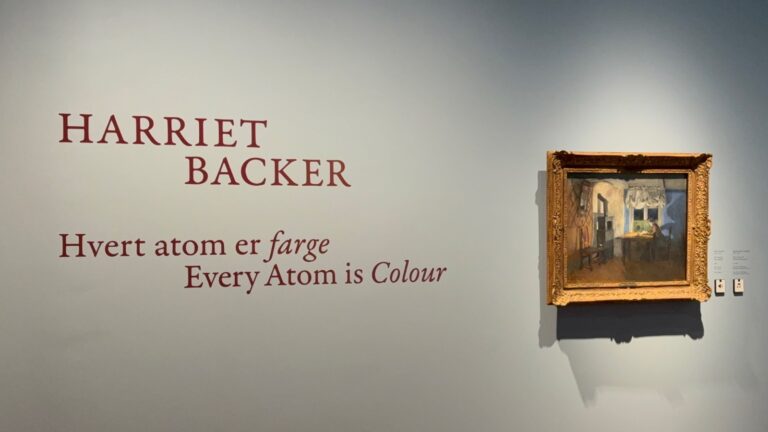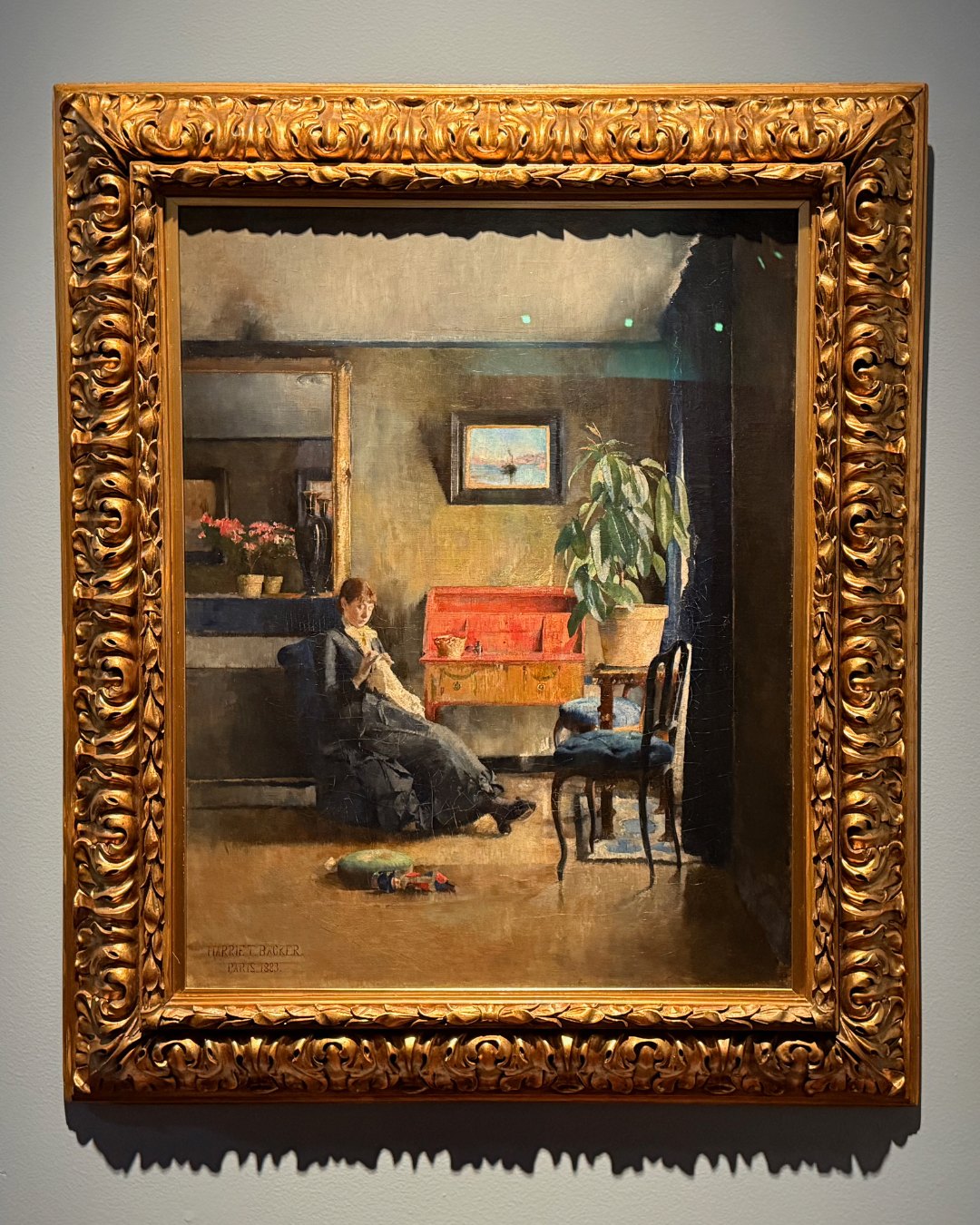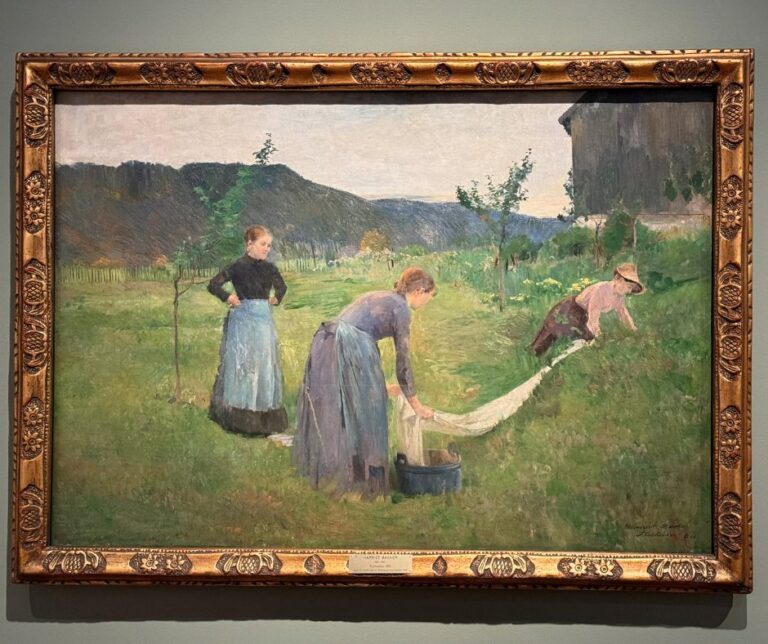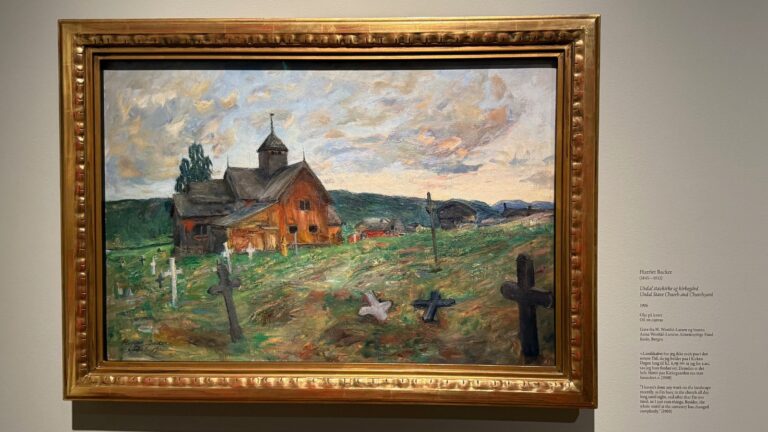Harriet Backer was a pioneering Norwegian painter known for her masterful use of light, colour, and interior scenes.
As a travel writer and content creator, I often find myself diving into unexpected stories while researching for my videos.

Recently, while filming in Bergen, I visited KODE Art Museum and found myself captivated by the temporary exhibition Harriet Backer: Every Atom is Colour.
I had heard of Backer before, but this experience gave me a much deeper appreciation for her life, her art, and her influence on Norwegian painting.
Her masterful use of colour, her dedication to interiors, and her impact on the next generation of artists make her a fascinating subject worth exploring.
A Pioneer in Nordic Painting
Harriet Backer (1845–1932) was a trailblazer in Norwegian art. At a time when women were still struggling for basic rights like education and voting, Backer carved out a space for herself in the male-dominated art world.
She was widely recognised for her extraordinary ability to capture the play of light and colour, particularly in interior scenes. Rather than using people to tell a story in her paintings, she allowed the colours and composition to speak for themselves.
Her works often depict quiet domestic moments, where the atmosphere, lighting, and rich tones evoke deep emotion.

Her artistic career was shaped by studies in Germany and France, where she absorbed influences from the Impressionist movement and the en plein air technique.
However, she developed her own unique approach—what she called en plein air indoors.
Rather than painting rapidly outdoors, as Impressionists did, she meticulously observed the interplay of light within interior spaces, capturing its subtle shifts with patience and precision.
Breaking Barriers in the Art World
Backer’s success was not just about her art; it was also about her role in paving the way for future generations. She became one of Norway’s most respected painters, earning a seat on exhibition juries and acquisition committees at the National Gallery.
She even founded her own painting school in Kristiania (now Oslo), where she mentored several major artists, including Nikolai Astrup and Halfdan Egedius.
She achieved this recognition at a time when women artists were rarely taken seriously.

Her career serves as an example of quiet but determined resistance—rather than making loud political statements, she let her work and her accomplishments speak for themselves.
She proved that women could not only be successful artists but could also play leading roles in shaping Norway’s artistic landscape.
Munich, Paris, and the Influence of Light
Backer’s journey as an artist took her to Munich from 1874 to 1878, during the city’s golden age as a European art hub. The Munich School’s focus on naturalistic history and genre painting appealed to her, as did its emphasis on rich, detailed colour work.
Though the Munich Academy was officially closed to women, the city itself was known for being welcoming to female students, giving Backer the space to hone her craft.
Under the mentorship of Eilif Peterssen, she focused on portrait and figure painting. It was here that she also met fellow artist Kitty Kielland, who became her closest friend and colleague.
She later moved to Paris, where she lived until 1888. Paris at the time was a hotbed of artistic innovation, particularly with the rise of le nouveau peinture (the new painting), which emphasised modern life and intimate interior spaces.

Backer’s artistic style developed significantly in this period, as she began to experiment more with atmospheric light effects.
Many of her paintings from this time depict friends and family reading, playing music, or working in dimly lit rooms, their surroundings infused with warmth and depth.
The Science of Colour and the Music of Light
One of the most intriguing aspects of Backer’s work is her deep understanding of colour theory. She was inspired by Michel Eugène Chevreul’s studies on how colours interact and influence perception.
In her paintings, complementary colours—such as red and green, or blue and orange—are often juxtaposed to create striking visual tension.
This scientific approach to colour harmonies made her work feel almost musical, as if each shade and tone resonated like a chord in a composition.
Music also played a literal role in her life and art. Her sister, Agathe Backer Grøndahl, was a renowned composer and pianist, and Harriet frequently incorporated musical themes into her work.
This connection between visual and auditory art was a defining feature of her aesthetic.
Norwegian Churches and Rural Life
After returning to Norway, Backer increasingly turned her attention to church interiors, particularly historical churches like the medieval church of Tanum and the stave church at Uvdal.

Unlike traditional religious painters, she did not attempt to convey religious ecstasy or divine revelation. Instead, she focused on the interplay between light and architecture, the presence of churchgoers, and the atmosphere of these sacred spaces.
Her church paintings capture the quiet solemnity of these places, imbuing them with a sense of peace and timelessness.
She also continued painting domestic interiors and rural scenes, often inspired by the landscapes of Østerdalen.
Her use of natural light in these works—filtered through windows, bouncing off wooden surfaces—creates an almost ethereal glow, bringing warmth and intimacy to each piece.
A Lasting Legacy
In 1903, Backer moved into a studio apartment in Oslo’s Hansteens gate, where she would live and work for the rest of her life. Two of her closest friends, Kitty Kielland and Asta Nørregaard, lived next door.
For over a decade, she ran her painting school from this home, mentoring the next wave of Norwegian artists.
Her final major work, The Infinite Painting, which she began in 1918, serves as a fitting metaphor for her career.
Like her paintings, her influence on Norwegian art was vast, stretching across generations. Her ability to blend light, colour, and emotion into a singular artistic vision remains unparalleled.
Today, thanks to exhibitions like Every Atom is Colour, Harriet Backer’s genius is being rediscovered by a new audience. Her contributions to Norwegian and European art are finally receiving the recognition they deserve.
And for those visiting Bergen, stepping into her world at KODE is an experience not to be missed. It runs until mid-August, 2025. KODE is celebrating its 200 anniversary this year and is well worth a visit next time you're in Bergen.

